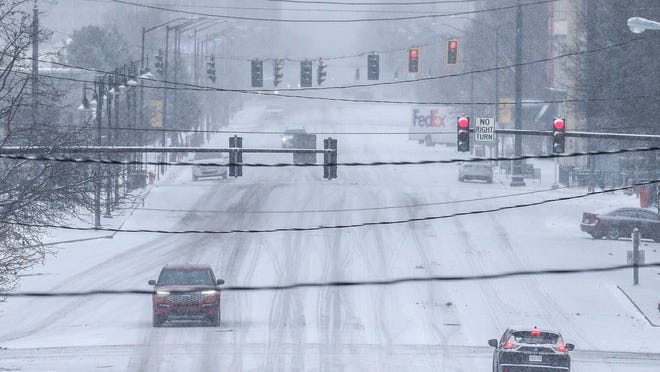[ad_1]
Buffalo braced Tuesday for more snow after a historic and brutal winter storm buried the region and left more than two dozen people dead.
Up to two more inches of snow could fall in parts of western New York through Tuesday, the National Weather Service said. Buffalo was under a winter weather advisory for 3-5 inches of lake-effect snow in some areas.
“This is not the end yet,” said Erie County Executive Mark Poloncarz, calling the blizzard “the worst storm probably in our lifetime.”
The storm system, which began before Christmas, pounded Buffalo with as much as 49 inches of snow in recent days. The blizzard has left at least 28 people dead in the region, some found trapped in cars and others outside as snow drifts prevented emergency responders from rescues.
The blizzard is one of the worst weather-related disasters in the region’s history and officials expect the death toll to continue climbing.
A thaw may be coming Wednesday
There is some relief in sight: On Wednesday, a warm front is expected to move across north central New York, raising temperatures above freezing, forecasters say.
Ashton Robinson Cook, a meteorologist with the National Weather Service, said the bomb cyclone – when atmospheric pressure drops very quickly in a strong storm – has weakened. It developed near the Great Lakes, stirring up blizzard conditions including heavy winds and snow.
Flight cancellations mount
More than 2,800 flights were canceled within, into or out of the U.S. for Tuesday as of about 8 a.m. Eastern time, according to FlightAware.
Flight cancellations by multiple airlines have left thousands of travelers stranded at airports across the country during the storm. The U.S. Department of Transportation announced it will be looking into Southwest Airlines’ cancellations in particular, which led the number of canceled flights by far.
Storm and record cold took a toll across much of the nation
The storm and record cold were felt across much of the nation over the weekend, knocking out power to several hundred thousands of homes and businesses, canceling thousands of flights and leading to at least one boil-water advisory.
At least 50 deaths nationwide are blamed on the storm, including in car accidents, from cardiac events while shoveling snow and at least one death from carbon monoxide poisoning inside a home.
Storm was unprecedented even for hardened Buffalo
Melissa Carrick, a doula, said the blizzard forced her to coach a pregnant client through childbirth by telephone. When none of the closer hospitals could be reached, an ambulance crew transported the woman to a hospital about 45 minutes south of Buffalo.
“In any other normal Buffalo storm? I would just go because that’s what you do – just drive through the snow. But you knew this was different,” she said.
While the impact of storm and its toll on western New York was unprecedented for residents, New York Gov. Kathy Hochul warned the state and the country should expect and be prepared for more of this kind of weather.
“Historic storms are no longer historic to us,” she said Monday. “That’s become a way of life in our state and that’s a result of climate change.
What is lake-effect snow?
Buffalo, located right next to Lake Erie, ranks among the nation’s snowiest big cities as a result.
During this week’s storm, the air mass over Lake Erie was “extremely cold” over the relatively warm waters of the lake, with winds that set up a snow band dumping intense snow for days, according to Dan Pydynowski, senior meteorologist at Accuweather.
“Both Lake Erie and Ontario just produced a very intense lake effect snow,” he said. “Not only are you dealing with heavy snow, you’re dealing with blizzard conditions … all those factors combined to make a very intense outbreak that’s finally just letting up now.”
Contributing: Associated Press

[ad_2]
Source link
